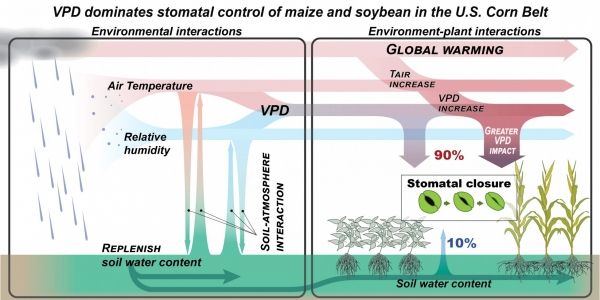As the climate trends warmer and drier, global food security increasingly hinges on crops’ ability to withstand drought. But are scientists and producers focusing on the right metric when measuring crop-relevant drought? Not exactly, according to new research from University of Illinois scientists, who urge the scientific community to redefine the term.
“Plants have to balance water supply and demand. Both are extremely critical, but people overlook the demand side of the equation, especially in the U.S. Corn Belt,” says Kaiyu Guan, principal investigator on two new studies, Blue Waters professor in the Department of Natural Resources and Environmental Sciences and the National Center for Supercomputing Applications at Illinois.
The demand Guan refers to is atmospheric dryness, often expressed as vapor pressure deficit (VPD). The drier the air, the more moisture is sucked out of pores, or stomata, in plant leaves. Plants have to open stomata to take in carbon dioxide as their food, but if they sense the atmosphere is too dry, they’ll close pores to avoid drying out. Keeping stomata closed too long leads to reductions in photosynthesis, plant growth, and grain yield.
Continue reading at University of Illinois.
Image via University of Illinois.


